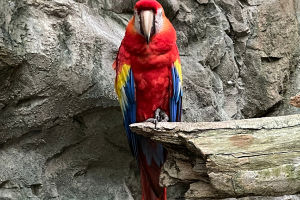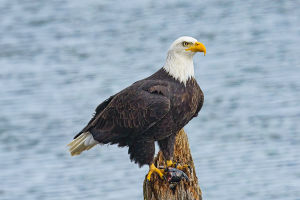Ever seen a bird that can dive like a missile and still look totally majestic doing it? That’s the brown pelican for you.
Found along both the Atlantic and Pacific coasts of the Americas, this iconic bird is not just a pretty sight – it’s a diving expert, a protective parent, and even a national symbol for a few places. Let’s take a closer look at why we should all appreciate this feathered coastal champion.
Where Do Brown Pelicans Live?
We can find brown pelicans all across the New World. Along the Atlantic, their range stretches from New Jersey down to the mouth of the Amazon River. On the Pacific side, they live from British Columbia in Canada all the way to central Chile – and yes, even on the Galápagos Islands! Depending on the season, some populations migrate while others stay in one region year-round.
What Do They Look Like?
During breeding season, brown pelicans get a fancy makeover. Their heads turn white with a splash of yellow on the crown, and their neck feathers become a rich dark reddish-brown. Around their throat pouch, you’ll spot a ring of white feathers, and there’s a pale yellow patch just under their front neck. Even the skin around their eyes gets involved—turning bright pink during breeding season, and fading to gray the rest of the year.
They Dive for Dinner!
These birds are famous for their dramatic dives. We’ve probably seen videos of them folding their wings and plunging into the sea like torpedoes. Fish are their main meal, but they’ll also snack on amphibians, crustaceans, and even small chicks or eggs if food is scarce. They usually hunt alone but nest in colonies, often choosing remote spots like islands, dune-covered beaches, or thick mangrove swamps.
Life in a Pelican Nest
When it’s nesting time, brown pelicans lay 2–3 chalky white, oval eggs. Both mom and dad take turns keeping the eggs warm for about a month. The chicks hatch pink and later turn gray or black within two weeks. Around 9 weeks after hatching, the young are ready to fly. Before that, though, they form small groups with other juveniles, sort of like bird playgroups – how cute is that?
A Symbol of Resilience
We’ll spot brown pelicans proudly representing several places. They’re the national bird of Barbados, Saint Martin, and Saint Kitts and Nevis. In the U.S., they’re the state bird of Louisiana and even appear on flags and official seals. But they haven’t always had it easy. In the 20th century, the use of harmful pesticides like DDT caused populations to crash, especially in California and the southern U.S. Luckily, thanks to strong environmental laws, their numbers have bounced back, and today, they’re listed as “Least Concern” by the IUCN.
Getting to Know the Brown Pelican Family
Did you know there are five subspecies of brown pelicans? Each has subtle differences in size, feather color, or range:
- P. o. californicus: Breeds along the Pacific coast of California and Baja California.
- P. o. carolinensis: Found on the U.S. East Coast and parts of Central America.
- P. o. occidentalis: Lives mostly in the Caribbean.
- P. o. murphyi: Inhabits the western coasts of Colombia and Ecuador.
- P. o. urinator: Resides on the Galápagos Islands.
Even though they all look similar, their genes and local behaviors make each group unique.
A Look Into Their Evolution
We’ve learned from science that brown pelicans, along with the Peruvian pelican, form one special evolutionary branch of their genus. For a while, people thought the Peruvian pelican was just a subspecies, but now we know it's its own thing – it’s bigger and has different features. Interestingly, brown pelicans can even breed with American or white pelicans in captivity, though not often in the wild.
Why We Should Care
Brown pelicans are more than just another coastal bird. They show us what’s possible when we take care of the environment. From surviving pesticide disasters to becoming national symbols, they’re proof that resilience and conservation go hand in hand.
Let’s Spot One Together!
So next time we’re walking by the ocean and spot a large bird diving headfirst into the waves, let’s take a moment to admire it. It might just be a brown pelican doing its signature move. And Lykkers, if you’ve ever captured a photo or had a close-up encounter with one of these amazing birds, we’d love to hear your story. Let’s share the wonder of wildlife – together!
Nature: Brown Pelicans
Video by CBS Sunday Morning


